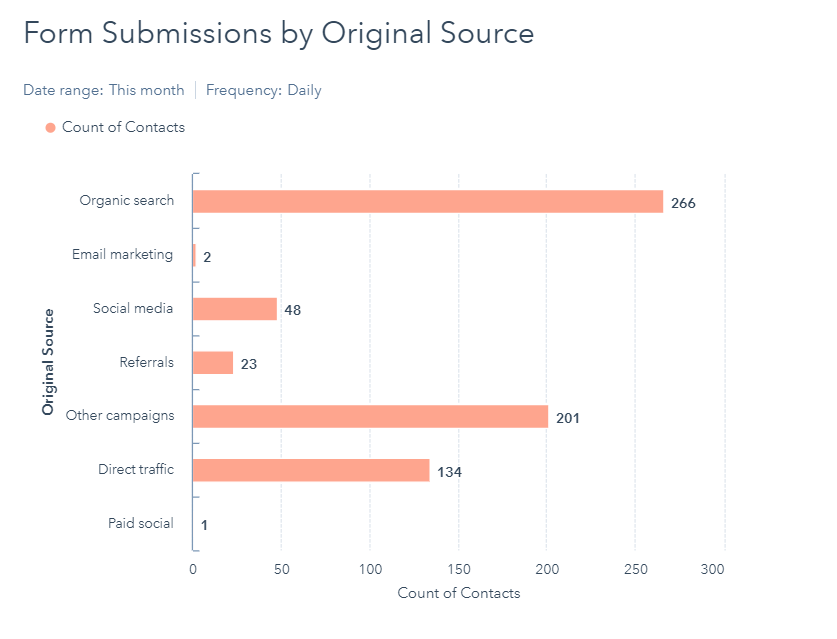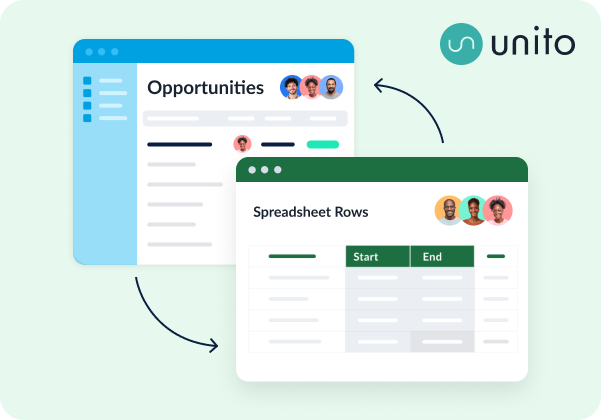CRM and Pipeline Management for Content Marketers: Measuring Success with Lauren Lang
How does content marketing impact an organization’s success? How should content marketers think about CRM and pipeline management? These questions are hotly debated across channels where marketers gather to discuss strategies and tactics for helping B2B organizations grow.
According to the Content Marketing Institute (CMI), only 46% of B2B marketers believe their organization is tracking content data effectively.
When many tech companies in particular are slashing budgets, these marketers are feeling the pressure to do a lot more with much less. But following this cliché without knowing the impact of your work is something this writer has struggled with at times.
From that 2023 study, 52% of respondents said their organization tracked the quality of leads, 45% relied on search rankings, 41% used quantity of leads, 32% tracked email subscribers, and 29% tracked their customer acquisition cost (CAC).
Enter Lauren Lang, Director of Content for Uplevel and an experienced marketer with over 10 years of experience in SaaS and AI/ML.
“The huge problem is that content marketing struggles to prove its value. There are a couple of reasons for that. The first is that the way marketing success is measured in places that are not content marketing are very different. They are measured by directly tracking through attribution, directly tracking conversions and leads.”
– Lauren Lang, Director of Content, Uplevel
We interviewed Lauren about the challenges she faced earlier in her career to prove the impact of her work. Here are excerpts from that interview, along with strategies she recommends for marketers invested in deciphering the attribution problem.
CRM and Pipeline Management for Content Marketers
Reporting on B2B marketing metrics
Another study from marketing services agency, Beam tells a slightly different story, which only further highlights the lack of consensus among content marketing leaders when it comes to success metrics. From the agency’s interviews with 400+ go-to-market (GTM) specialists, 42% of content marketers claimed that leads and conversion were their primary success metric, but unlike CMI’s report, only 12% and 10% claimed that SEO performance and traffic were considered as such.

This confusion is clearly further exacerbated by miscommunication and competition between different marketing roles within organizations.
It all stems from the CRM
One tip to keep in mind? It helps to understand how your organization uses their CRM and reporting tools. That means learning Salesforce or HubSpot inside out, as well as how to share data from those tools in something more accessible to the rest of your company, such as from your CRM to Google Sheets or SFDC to Microsoft Excel.
Managing the data in your marketing pipeline
When product and partner marketers, paid ad specialists, account-based marketing teams, and digital analysts all see the same data differently or claim ownership over given channels, content is forced to follow suit. But according to Lauren, content isn’t a channel and in fact fuels every other campaign and marketing strategy:
“I vividly remember sitting in a marketing pipeline meeting, watching colleagues report impressive lead numbers from paid ads, events, and partnerships. When it was my turn, I had to report on meager organic leads directly attributed to the blog. It hit me: this wasn’t an accurate picture. My content was fueling those other channels, yet it wasn’t getting credit. That’s when I knew I needed a better way to showcase the true impact of my work.”
– Lauren Lang, Director of Content, Uplevel
This realization wasn’t just about numbers; it was about recognizing the value of content in B2B, as well as the invisible role it can play in driving business results.
For Lauren, this was a turning point. It fueled her determination to find a solution to the marketing attribution problem. She didn’t just want to respond to stakeholders — she wanted to empower marketers to showcase the true impact of their work:

Digging deep into CRM pipeline data
The further her marketing ops team explored, the more data they found hidden in their CRM — in this case, Salesforce. Lauren devised a plan to begin tracking and analyzing marketing data in their CRM through a series of reports tied to campaigns being run by other teams. These reports could then be easily shared with stakeholders in a more familiar tool, such as Google Sheets or Excel. Lauren and her team called it their content pipeline dashboard, and used it to validate the impact of content across every campaign launched by the marketing department.
“The content dashboard offers a different perspective on attribution and conversion data, it looks at what content is consumed before and after a lead converts, focusing on assets and campaigns, not just channels. It reveals how each piece of content performs throughout the pipeline.”
– Lauren Lang, Director of Content, Uplevel
But Lauren cautions against looking for easy answers or simple conclusions: “It’s tempting to assume content viewed before conversion directly caused it, but that’s not always the case. It’s more about understanding overall content performance through the tools your team uses, HubSpot or Salesforce — the CRM. That includes looking at what’s happening to those who don’t convert. It’s better to have some false positives than to miss the impact content truly has.”
Setting the right goals with the right expectations
For content marketers who want to follow in Lauren’s steps and build a pipeline, she emphasizes the importance of having realistic expectations: “It is valuable to show evidence that content influences the customer journey,” she says. “Even if you can’t pinpoint a direct cause-and-effect relationship, you can demonstrate correlation. If a significant percentage of conversions viewed certain content, it’s likely contributing positively.”
We model a similar data-driven approach at Unito which allows everyone across teams to make more informed decisions. “You can start saying, ‘We’re seeing X% of conversions engaging with this type of content, so let’s do more of that. It’s about identifying trends and optimizing your strategy,” says Lauren. “We’re looking at assets, not channels, and we look at campaigns. A different way to slice it is: what is being consumed at each stage of the pipeline?”

Where does the CRM pipeline data live?
The data needed for a content pipeline typically resides in three main areas:
- People: Information about the individuals interacting with your content, such as their name, company, and engagement history. In other words, contacts in Salesforce or HubSpot.
- Deals and leads: Details about the sales pipeline, including HubSpot leads, Salesforce opportunities, and closed deals, both won and lost.
- Content engagement: Information about how people interact with your content, such as page views, downloads, and shares.
Lauren’s approach involves consolidating data from various sources into a spreadsheet, using pivot tables and VLOOKUPs in Excel to create insightful reports. “From there,” she explains, “I can visualize the data with simple bar graphs to see which content pieces are performing best in terms of influencing deals and where those leads are in the pipeline.”
This streamlined process empowers marketers to identify top-performing content and understand its impact at different stages of the customer journey. It’s a practical way to bridge the gap between content creation and measurable results.
How can you use CRM data from Salesforce and HubSpot to better manage your pipeline?
Salesforce and HubSpot are both powerful CRMs in their own right. Every sales and marketing team knows they’re the lynchpin of any solid GTM strategy. So how do you get your CRM data into another tool where you can analyze it?
With Unito.

Unito’s brand new Salesforce integration allows you to sync any standard or custom object to 50+ other tools including ServiceNow, Smartsheet, Asana, Jira, Azure DevOps, Google Sheets, and Microsoft Excel.
Want to see how it works? Here’s a full guide to syncing Salesforce data with a Google Sheet.

If you’re interested in building a content pipeline of your own or would like to follow Lauren Lang for more content wisdom, subscribe to her substack newsletter, Contentious.


